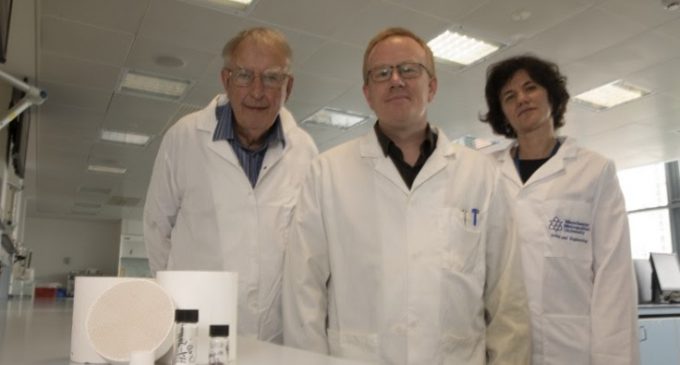Limescale-like Waste From Geothermal Power Could be Eco-friendly Alternative to Synthetic Catalysts

A geothermal power waste product that is similar to limescale can be used to decontaminate engine exhaust fumes, university chemists have discovered. The team at Manchester Metropolitan University found that a silica-based solution – extracted from fluid used to generate renewable geothermal electricity in New Zealand – could be re-purposed as a catalyst that turns toxic pollutants into less harmful compounds.
Such catalysts are most commonly found in motor engines where they convert carbon monoxide into carbon dioxide in the exhaust gases. The silica could be used to replace the ‘much higher carbon footprint of industrially made products’ with one that is naturally produced from a renewable source.
The university researchers, led by Dr Aidan Doyle, Senior Lecturer in Industrial Chemistry, and Dr Lubomira Tosheva, Senior Lecturer in Materials Chemistry, found the silica catalyst showed “exceptionally high activity” in reducing exhaust emissions at the laboratory scale, which means it boasted a very efficient performance.
Results of the study appeared in the Microporous and Mesoporous Materials journal.
Dr Doyle said: “We used methane as the test fuel, as it is a very promising industrial fuel for heavy goods vehicles, trains and even ships. We found the activity of the silica catalyst to be the best we have ever seen in this University’s laboratory to decontaminate exhaust fumes.”
The waste material came from a New Zealand company, Geo40 Ltd, which has developed a world first technology for extracting the silica and further processing it into green alternatives to conventional industrial products.
Extracting the silica, or silicon dioxide, from the water early in the geothermal energy-generation process prevents silica scaling from forming in pipes and reinjection wells – much in the same way as limescale, mostly comprising calcium carbonate, builds up on the element in a domestic kettle.
The Manchester Metropolitan University team collaborated with environmental consultant Roger Rothon, who works with Geo40 Ltd, to test whether one form of waste silica – known as colloidal – could be used as a substitute catalyst substance.
Dr Doyle said: “Our solution is twofold: we have a use for a naturally derived silica that is a significant cost to manage in a geothermal electricity generation plant, and we have used this as an alternative to synthetic catalysts that are produced in a less sustainable manner.”
Dr Doyle and his co-workers are looking at the next steps to build on their findings, and are experimenting with 3D-printing the substrate of a catalytic converter onto which the catalyst is applied.
John Lea, CEO of Geo40, said: “We are very pleased with the results of this research as it is an excellent opportunity to replace the much higher carbon footprint of industrially made products with a product that is naturally produced from a renewable source.”
CAPTION:
Pictured (left to right): Roger Rohon, Dr Aidan Doyle and Dr Lubomira Tosheva.







